A Hindu Marriages - Some are grand, a few are flashy while many are much simpler as well - Let's see how Hindu marriages look in Himachali Colours

According to Hindu Shastra, there are four stages of life, of which Brahmacharya Ashram or student life is the first stage. Grahastha Ashram or married life is the second. It begins, when a man and a woman come together and marry. In India, marriage is treated as an institution, which teaches the actual values of life. Every stage in life has its own charm and married life is no exception.
Mehndi Ceremony
One of the important rituals of Hindu Marriage is the mehndi ceremony. It is believed that the color of mehndi signifies the essence of love in a marriage, so it is put on the bride's hands to strengthen that bond of love. In Himachal, mehndi ceremony is observed in the groom’s family as well and his hands are also adorned with mehndi as part of the ritual. The female friends and family members of the bride and the groom rejoice and celebrate this occasion, as henna gets painted on their hands and feet. Singing traditional songs and dancing to the beat of music forms a major part of this ritual.
Samuhat
On the morning of the wedding day, this ceremony starts with the sthapana of Lord Ganesh. Family members pay obeisance to deities and this is followed by the haldi cermony.
Pithi or Haldi, the cleansing ceremony is practiced during which the bride and the bridegroom are smeared with turmeric powder by friends and relatives in their respective homes, as a part of their beautification process. Finally havan (homa) takes place.
Related Blogpost - How to choose your Wedding Photographer?
Janeu Ceremony ( Yagyopavitam ) :-
Among Hindus a Sacred Thread is a thin consecrated cord, composed of distinct cotton strands, worn to symbolize coming of age.The sacred thread is known by many names ), such as Janeu, Lagun, Yajnopavita, Yagyopavit, Yonya and Zunnar. In Himachal, its called as Janeu and I first time saw this ceremony in a Kangra Marriage. I have attended many marriages in Hamirpur and never saw this.
Related Blogpost - Immortalizing precious moments with Candid Wedding Photography
After presenting janeu and rice, it was time to touch his feet with some flowers, kumkum, water etc...
All material used during this process except janeu, which is taken care by priest only !!!
Priest arranging janeus for next set of relatives...
Related Blogpost -
Grand Indian (Punjabi) Wedding Photography by Arpit Rastogi
Almost every relative of same gotra needs to be present for this ceremony.
Water with mix of Gangajal, Colored rice, flowers, dhruva and something sweet in a plate !!
When all ceremonies are done at groom's place, everyone gets ready for barat. All the relatives, friends and people from same village go to Bride's place with relevant stuff.
All important people in Barat wear Pagadi and these days most of the folks get something to signify their presence in barat. Even small kids get some colorful strolls or designer caps...
Related Blogpost - Grand Indian (Punjabi) Wedding Photography by Arpit Rastogi
As the Barat reaches, Groom and Bride are directly taken to the stage for Varmala. Few years back, it was not considered as the right thing to do. Usually there used to be place where Barat had to stay for some time. Priest from bride's side used to come to Janvasa and do some rituals. After Milni, takes place near Janvasa and Barat goes to Bride's home. Then all ceremonies used to happen in Vedi and no stage :)
Vara Satkaarah and Var Mala ceremony
The actual marriage ceremony begins with the ritual of the Vara Satkaarah in which the bridegroom and his friends and relatives are welcomed and received at the entrance of the hall where the wedding is to be conducted. The mother of the bride applies tilak on the groom’s forehead and performs aarti to bless him and to ward off any evil. This is followed by the Var Mala ceremony.
Var Mala ceremony is an important main wedding day ceremony. It is also known as Jaimala and basically involves exchange of garlands between the bride and the groom. Like all other customs and rituals, this is also a significant ceremony which finds reference even in the Vedic literature. It is an ancient practice and is still observed in India.
After Varmala Ceremony, both of the main parties need to sit on hot seats to have good wishes of their relatives and loved ones !!!
And of course, need to practice a smile which comes consistently with each photograph of relatives behind these seats...
Friends plays important role in a marriage and is a good support when you have handle with bride's sisters/friends :)
Saptapadi
One of the most significant rituals the bride and the groom perform is the Saptapadi or saat phere around a scared fire that is symbolic of God. One end of the groom's scarf is tied to the bride's dress and this marriage knot is supposed to symbolize a life-long togetherness. Then they take seven rounds around the fire and each of these rounds represents nourishment, strength, prosperity, happiness, progeny, long life and harmony and understanding, respectively.
It is also during this time that the groom fills vermillion or sindoor in the center parting of the bride and puts mangalsutra around her neck.
This process of adding vermillion or sindoor takes place thrice and of course it's very difficult to control the amount of sindur being placed each time...
Gorgeous smile after one of the main ceremony of Himachali Marriage - Sindoor !!
Kanyadaan, Vivah Homa and Pani Grahan
In the Kanyadaan ceremony, the father of the bride hands over his daughter to the bridegroom. The Vivah Homa follows which is the sacred fire ceremony. It is held to make sure that all the holy ceremonies begin on a pure and spiritual note.
Both the bride and the groom wear Khadau during Pooja. Khadau is a type of wooden slipper in the shape of a flat wooden base with a toe hold sticking out. Khadau was traditionally considered to be the slipper of Lord Ram, known as “Charan Paduka”. These slippers are also worn by priests and Brahmins, in temple or other religious places.
In the ritual of the Pani Grahan, the groom takes the right hand of the bride in his left hand and accepts her as his lawfully wedded wife.
This is another anonymous ceremony that takes place inside Vedi. As you can notice something needs to be dropped in havan-kund after instructions of priest and eyes are covered at same time... Looks like some test defined in terms of rituals followed during Himachali Marriages...
This particular thing is called Khadau, a slipper made up of wood having flat base with a toe hold sticking out. This one is modern one. The older version were really difficult to handle and made up of only wood...
A decorated Kalash covered with red colored cloth with golden outlines and Aarti plate on top of it...
Countless ceremonies happen inside Vedi, although shortcuts have been adopted by modern priests :) .. Even priest try to be creative with all the Mantras and other processes followed during a typical Himachali Marriage.
Laya (Laja) Homa : The Oblation of Parched Grain
Here the bride offers sacrifice of food (poured into her hands by her brother or someone representing her brother) while keeping the palms of her hands over those of the groom to the Gods for their blessings.
Final step of this process of Laya (Laja) Homa !!!
Let them rest for a moment and have a shot with that same smile, which needs to be carried throughout the marriage :)
Kaleera Ceremony :-
The bride is also adorned with Kaleeras. The shape of the Kaleeras has a symbolic meaning. The top is shaped like a coconut, to show that the bride will always have food in her new home. There are metal pieces hanging from it, to show that she will always have wealth.
Most of the relatives gift kaleeras to Bride with their wishes about good future !!!
Over the time designs of these Kaleeras have changed from Coconut+metalic stuff to Coonut+lots of other things !!! And people spend significant time for creating these Kaleeras in Himachal !!!
Earlier bride had to handle all the kaleeras in her hand throughout the marriage but now she can manage with one is each hand.
Not a good photograph but fine for having a closer look at Kaleera used in Himachali Marriages...
....
...
...
...
...
Vidai Ceremony
Vidai (also called Bidai), which simply put is departure of the bride from her father’s house, is a post wedding ceremony. This takes place after the wedding rituals are complete. During the vidai ceremony the bride is accompanied by her parents and associates who lead her outside the doorstep of the house. In Himachal, the maternal uncle (mother’s brother) takes the bride to the car or the Doli and hands her to the groom. Before crossing the doorstep, she throws back three handfuls of rice and coins over her head, into the house. This symbolizes that the bride is repaying her parents for all that they have given her so far.
Just when the bride and the groom sit in the car and it starts, the bride's brothers and cousins push the car from behind, signifying that they have given her a push ahead to start a new life with her husband. After the last car starts, money is thrown on the road to discard the evil. Generally, younger sister accompanies the bride to her matrimonial home.
A girl at Bride's side is confused that why these folks are taking her Di with them ... And not able to accept the fact even when her mom described the scenario...
While kids from other side are happy to see new member in family !!!
Himachali Dham (Lunch served in traditional marriages of Himachal Pradesh)
Dham is prepared by botis only who are Brahmin chefs and have been in this profession for generations. The utensils used for cooking the food are normally copper ones. The preparations for Dham begin a night before, and when ready, it is served in courses to people who sit on floor. Pattals or leaf plates are utilized to serve the food. And as for the dishes themselves, they include rice, Madra (Sepu badi/Mukund badi, Rajmah etc), Palda (a curd based dish or curry), mustard based raita, pulses and Meethe chawal (sweet rice) or Mithdee (made of boondi, Bread crumbs etc).
Himachali Cook - Boti !!!
Dishes vary from one district to another as per local culture.
Indian wedding brass bands
Indian wedding brass bands are an integral part of Himachali Hindu wedding ceremonies. It was way back in the 17th century that the first wedding brass band made their appearance in India. Baarat is accompanied with brass band. People dance to the tunes of the classical musical instruments playing latest bollywood item numbers. The band also gives emotional touch to the wedding when it plays sad tunes during Vidai. Brass band is an indispensable part of Himachali wedding as it is played during Samuhat, Tel, Baarat, Vidai, Dham and more.
Punjabi dhols are also very popular in lower Himachal region. With this, it came to my mind that dresses and ceremonies in upper Himachal (Shimla, Kullu) are bit different and interesting. Hope to go to one of the marriage in upper Shimla or Kinnaur and come with a new story on Himachali Marriages... especially from the apple country !!!
Usually there is a band leader in the whole troop who carries a different type of Baja. This person starts all the songs in some creatives tones and others follow when he stops. Notice the bandmaster on left who is waiting for their boss to stop ...
At times, these folks play interesting tunes by mixing bollywood and Himachali songs... In past this was only music to dance on and now hardly they find people in marriage who dance on their tunes. Even earning of these folks have reduced a lot. And playing these instruments is really difficult and need regular practice !!!
Though these are the most popular marriage traditions in Himachal, every city, village and even each house has a unique version. In reality, no two Himachali weddings are exactly the same.



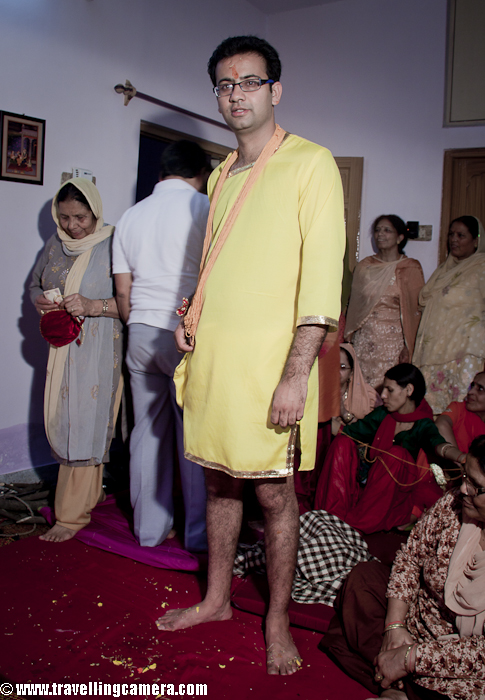


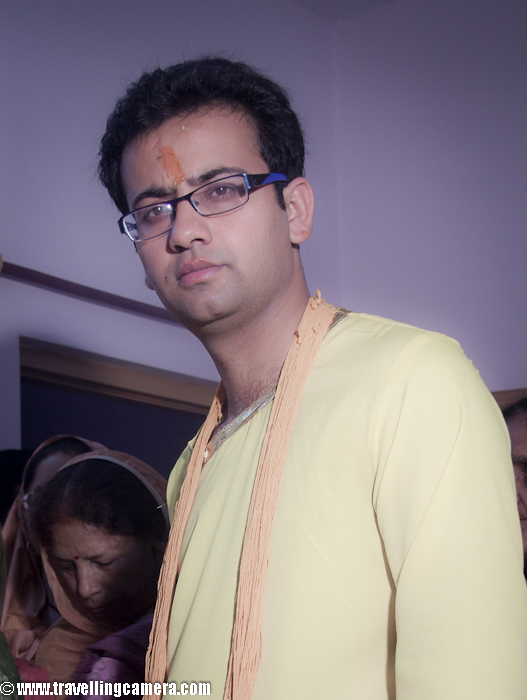
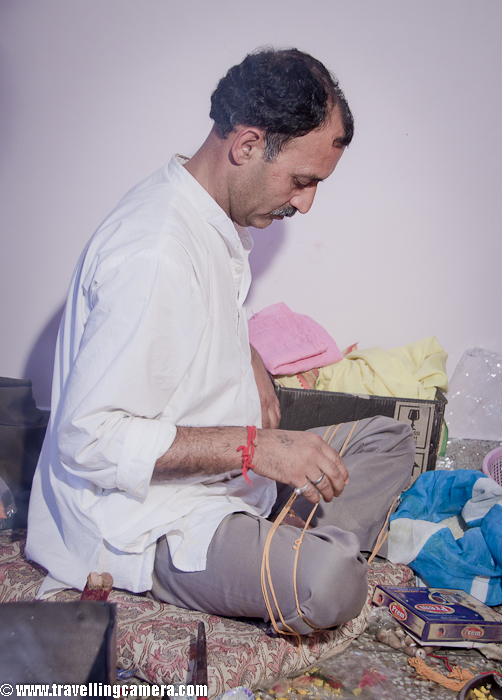


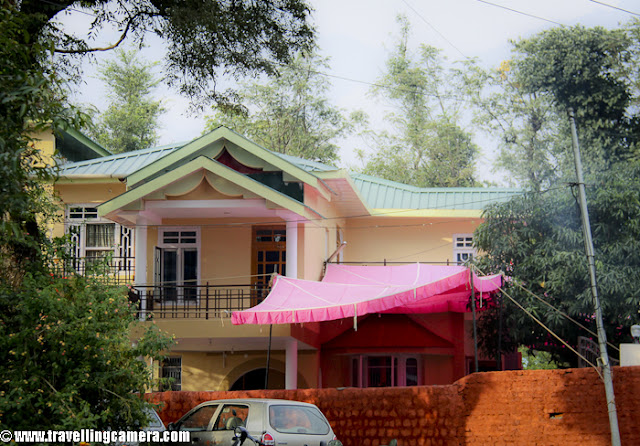
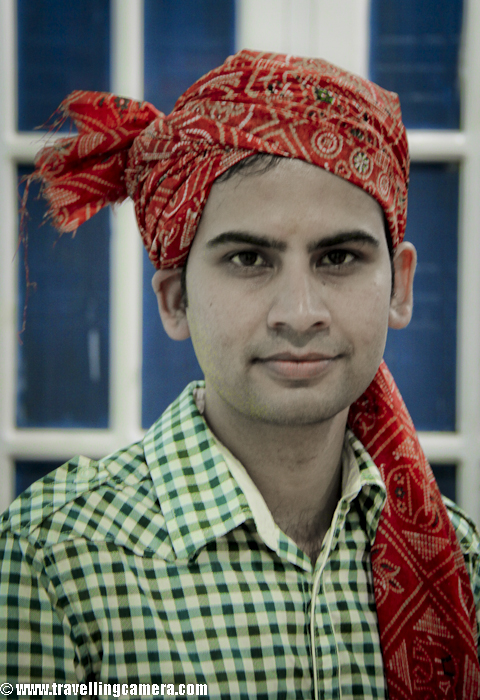

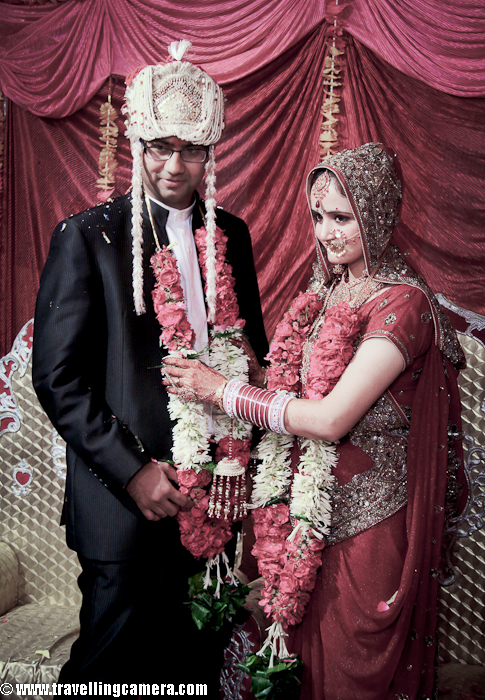
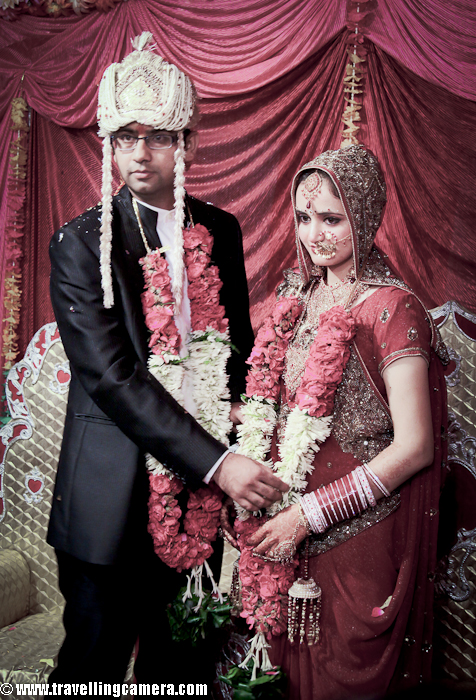
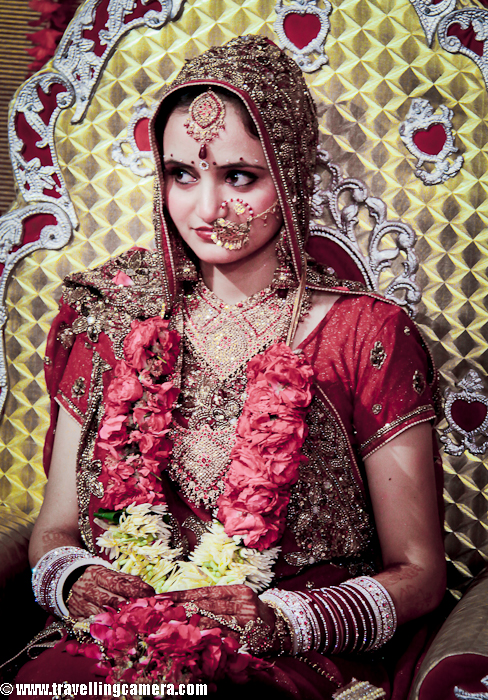

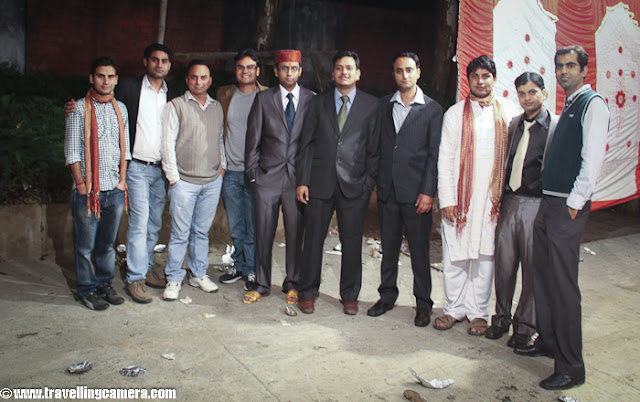

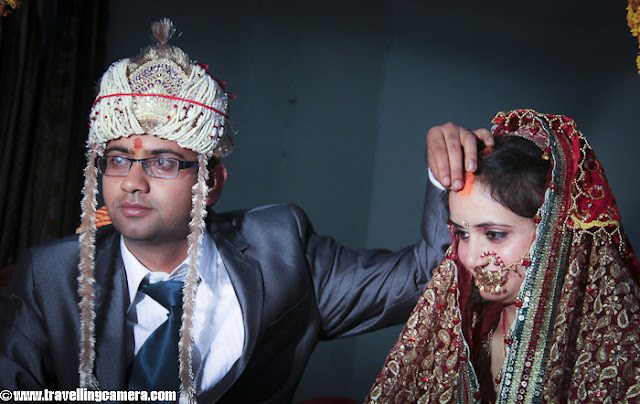

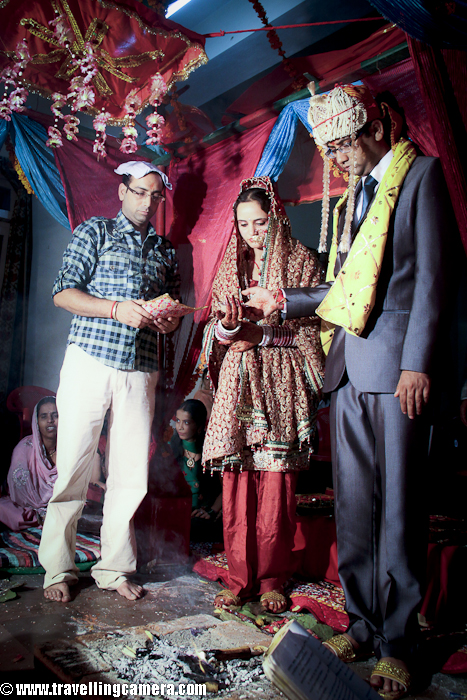
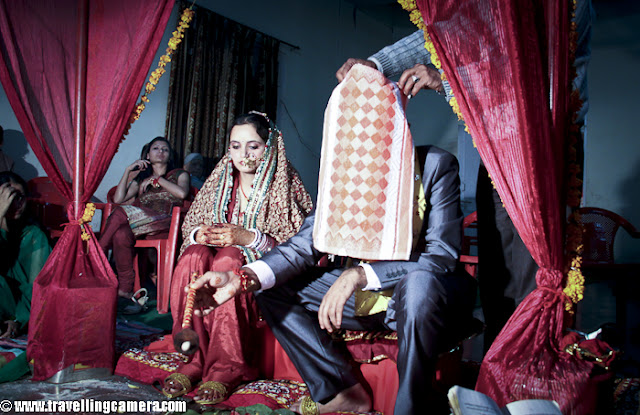


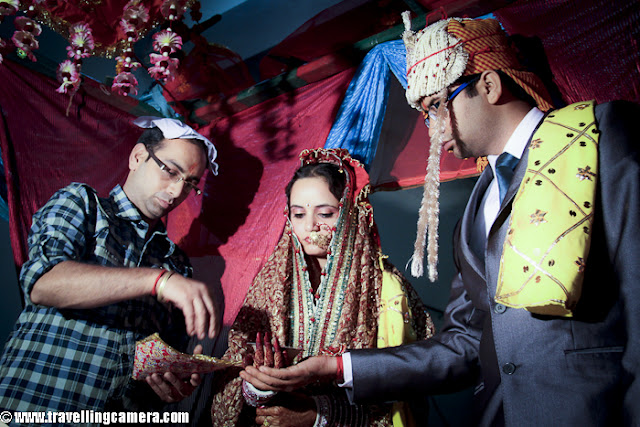

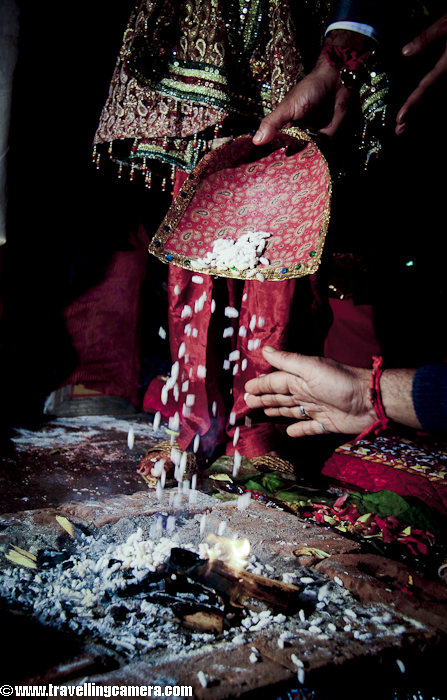







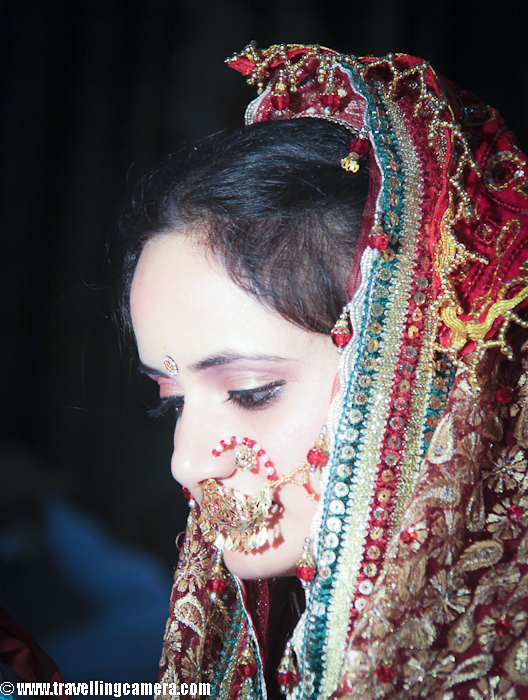
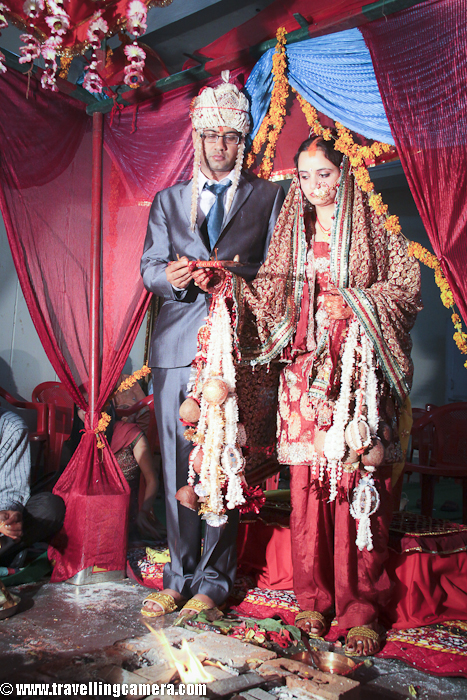



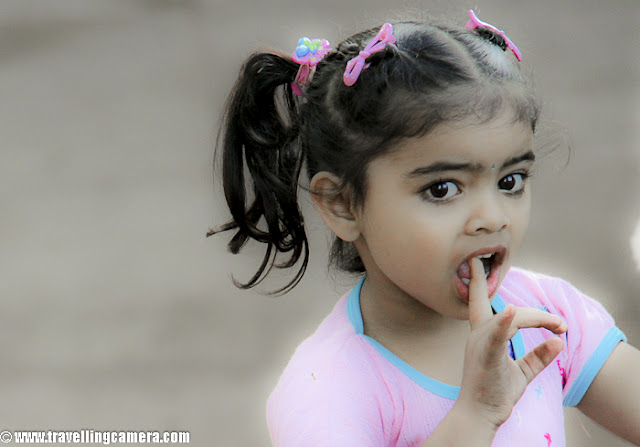









.jpg)
Comments
I am isha pranays wife
saw these pics just now...lovely moments captured by your cam ....god bless ...take care
@ Anita - Good to hear that you were able to recall your marriage after seeing this Photo Journey. That is the real idea of Photo Journey and happy to hear that it worked for you :) .. There is lot of stuff from Himachal on this blog and not sure if you know that Kangra got snowfall this year:)
Am not a Himachali but felt great to see all of this !
I will belong to Kinnaur.
Excited !:-)
I am from Himachal and my wife is from Delhi. At times we talk in Pahari and now she has started picking up some words correctly. Making sentences is tricky, but I am sure that she will be able to do that soon :) ...